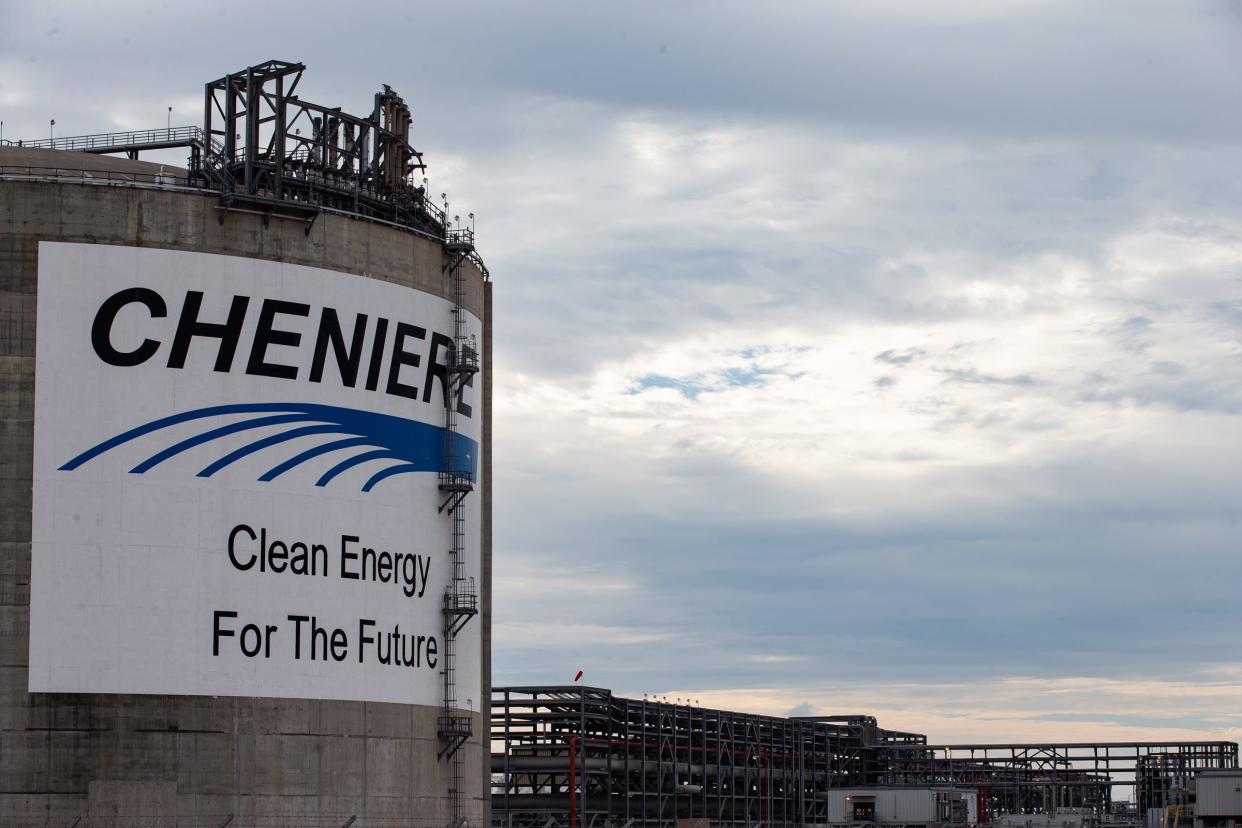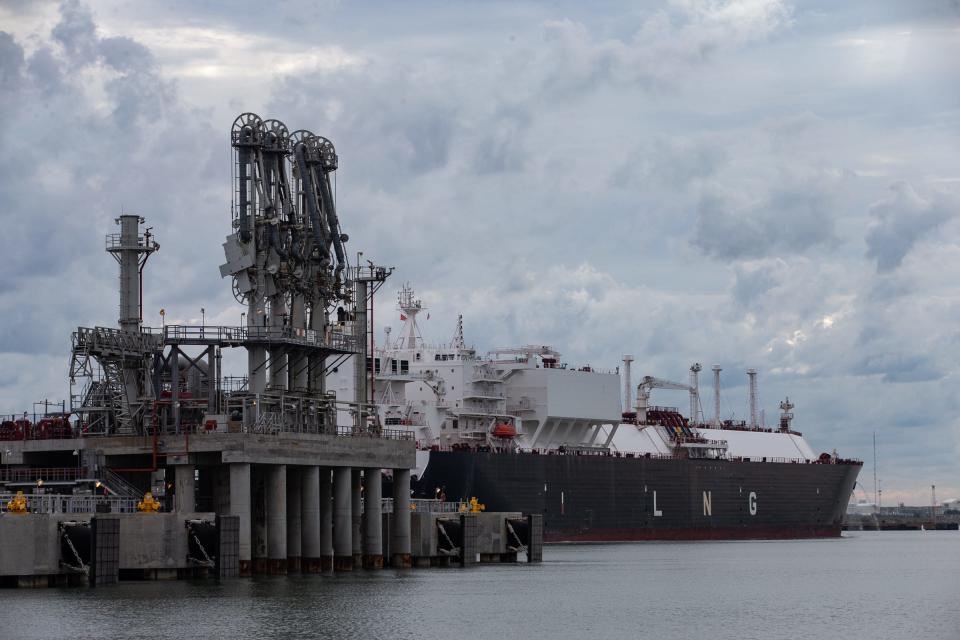Cheniere breaks ground on $8 billion expansion of LNG export facility near Corpus Christi

Editor's note: This article was corrected to clarify the liquefied natural gas output of the additional production lines, or trains, as part of the expansion. Each train would add another 1.64 million metric tons per year of capacity.
GREGORY — Though prep work on the third stage of Cheniere Energy’s liquefied natural gas plant began earlier this year, company executives on Tuesday formally marked the start of the construction with a groundbreaking ceremony.
The work is estimated to cost $8 billion and will add to the already-built $17 billion facility to include seven additional production lines, or “trains,” that operate independently to produce liquefied natural gas at a rate of about 5 million tons annually. Two larger trains were commissioned in 2019 and currently remain in use.
“That takes us up to a little over $25 billion right here in the Coastal Bend,” CEO Jack Fusco told company employees, partners and local officials during the ceremony. “We are extremely excited for that.”
Houston-based Cheniere is the largest U.S. exporter of liquefied natural gas and operates facilities near Gregory in San Patricio County and at Sabine Pass in Louisiana, the latter of which is the largest LNG facility in the nation. The Gregory facility is operated by Corpus Christi Liquefaction, a subsidiary of Cheniere.
The first of the seven trains should be commissioned by late 2025. Then, the following trains will be completed and commissioned one by one with three to four months in between, said Ari Aziz, vice president and general manager of Corpus Christi Liquefaction.
More than 2,500 workers will be working at peak construction on the expansion. About 750 employees operated the existing portion of the facility, according to Cheniere’s website.
Project was delayed
The U.S. Federal Energy Regulatory Commission, when it approved the construction in fall 2019, gave Cheniere until around November 2024 to complete the project.
However, last year Cheniere asked federal regulators for a 31-month extension to build the proposed Stage 3 expansion due to delays resulting from the COVID-19 pandemic.
The pandemic "resulted in adverse economic and logistical conditions that slowed commercial progress and precluded" the company from making a timely final investment decision, according to the company’s filing with federal regulators.
The commission, after hearing arguments from environmentalist groups to deny the request, granted Cheniere the time extension in May.

Russia-Ukraine war
Cheniere is the frontrunner among other companies seeking to build LNG facilities to meet rising global demand as European countries seek to wean themselves off Russian energy in the wake of the Russia-Ukraine war.
This year, more than 70% of the company’s LNG output has gone to Europe, said Anatol Feygin, executive vice president and chief operating officer.
However, the company is striking more long-term contractual agreements with customers in Asia. One such deal with China’s state-owned oil and gas company, PetroChina, will start in 2026 and continue through 2050.
“European counterparties have not become comfortable with (longer-term agreements), so, in terms of short term, overwhelmingly the business model is supporting Europe. In terms of long-term commitments, it's still largely Asia and other intermediaries,” Feygin said.
Expansion, outstanding permits
Cheniere is seeking to expand the facility further than the planned seven trains.
The company in August submitted applications seeking to add two more trains, bringing the total to nine for Stage 3, and a 220,000-cubic-meter storage tank, according to company filings with the U.S. Federal Energy Regulatory Commission. The additional trains would add another 1.64 million metric tons per year of capacity each.
Feygin said the additional trains would bring the total cost of the expansion from $8 billion to $13.5 billion.
In September, the company requested to install three ground flares to be connected to the seven-train portion of the facility. Flaring is a controlled combustion, or burning, of gases that are part of the operation of an LNG facility. This change, if allowed, would represent a different method of flaring compared to the elevated flaring used by the existing facility.
More:Study: Tax breaks from Coastal Bend governments to local industry total $2.47 billion
EPA compliance
The U.S. Environmental Protection Agency reinstated a rule wherein specific types of industry, including Cheniere, must prove they’ve complied with limits on formaldehyde, a potent carcinogen. Cheniere petitioned for a waiver of the additional limits, but the EPA declined.
While the company’s Sabine Pass location is making adjustments, the Corpus Christi facility submitted testing documents to the state last month that showed emissions from all of its 18 refrigeration turbines were below the EPA's threshold, according to Reuters.
This article originally appeared on Corpus Christi Caller Times: Cheniere breaks ground on $8 billion expansion of LNG export facility

